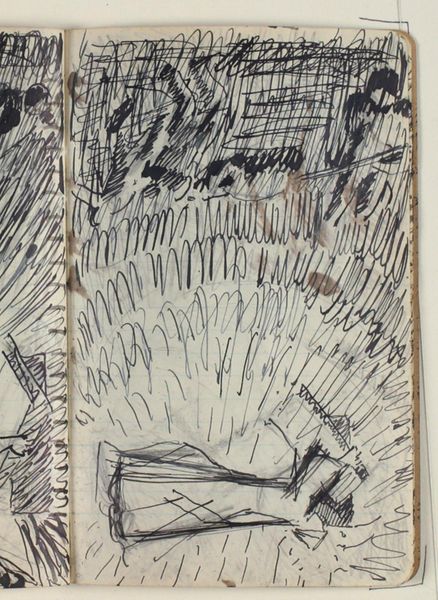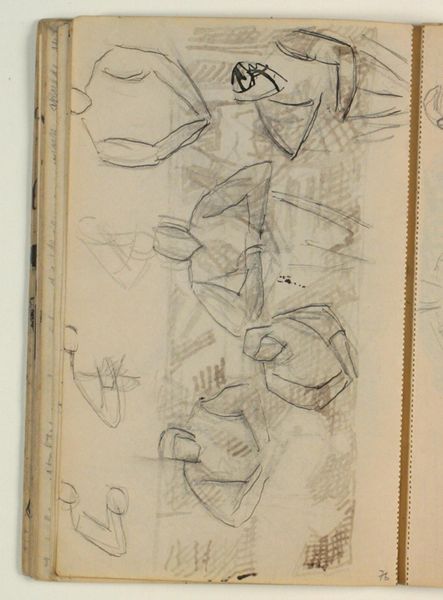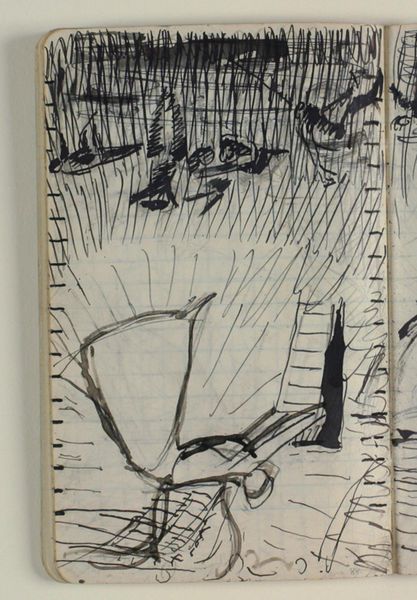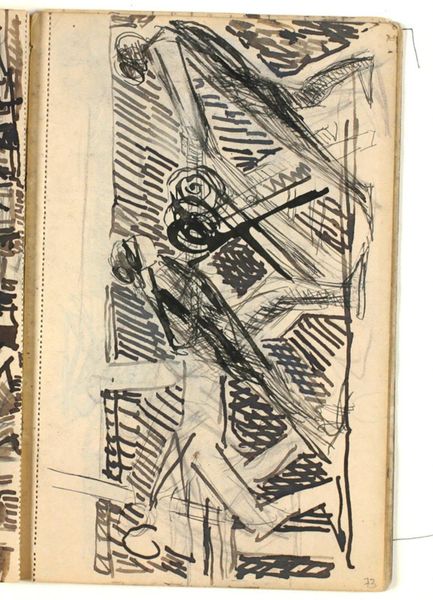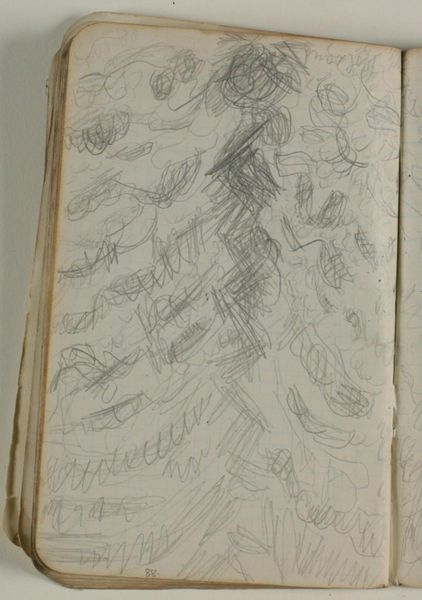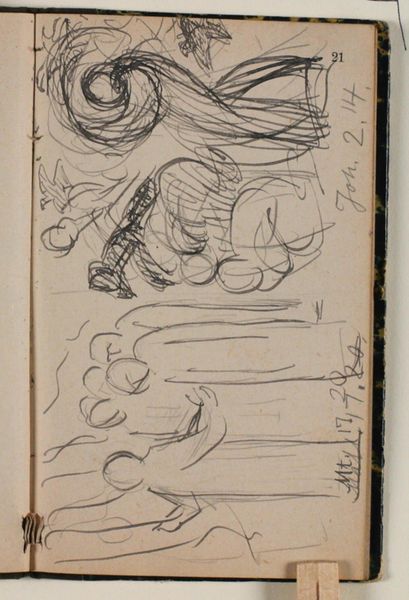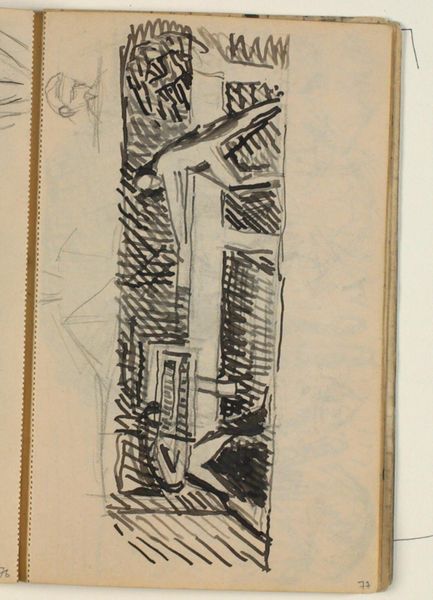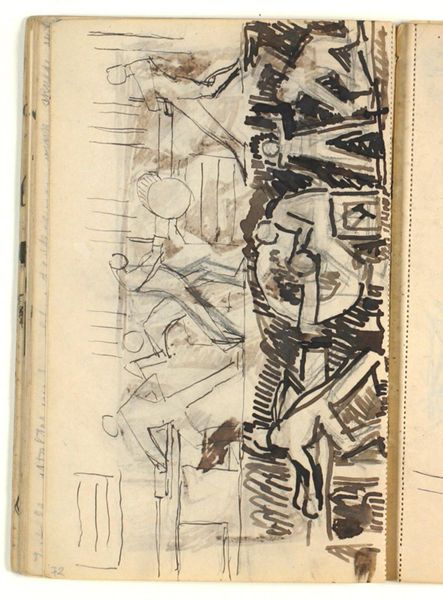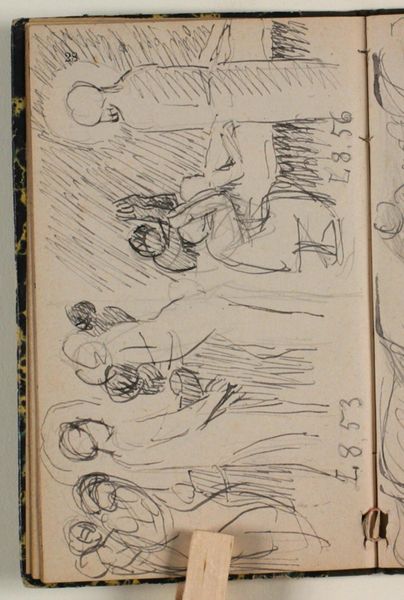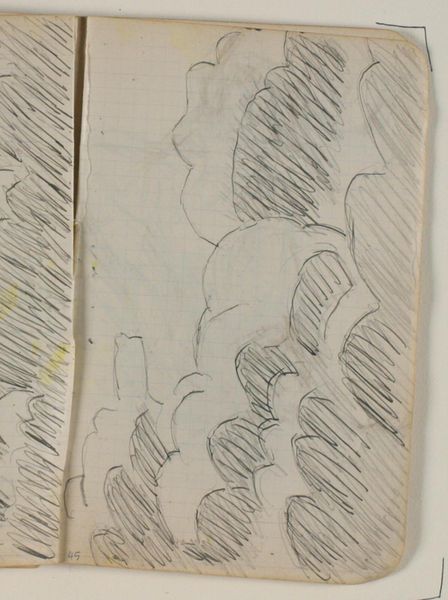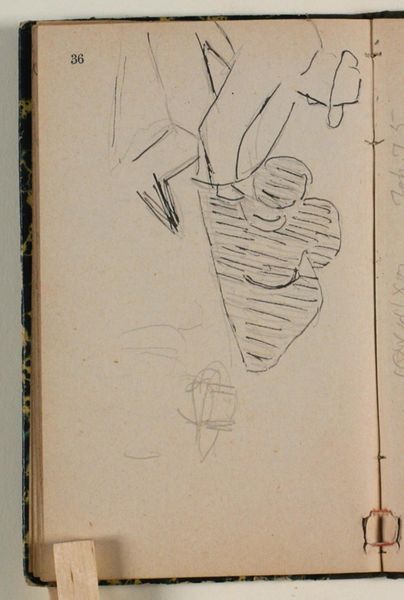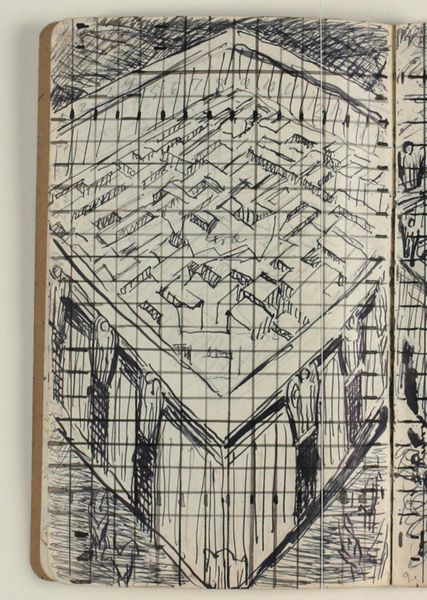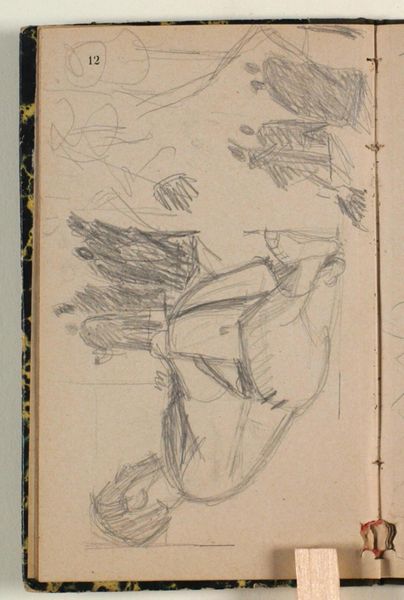
Dimensions: 175 mm (height) x 109 mm (width) (monteringsmaal), 175 mm (height) x 109 mm (width) (bladmaal)
Curator: Let's turn our attention to this drawing, “Engle vælter stenen fra graven,” created between 1933 and 1934 by Niels Larsen Stevns. Editor: It's strikingly raw. The energetic ink lines on paper almost vibrate. There's an immediacy to it – like a quick sketch capturing a moment of powerful movement. Curator: Exactly. Larsen Stevns employs a seemingly simple medium – ink on paper – to depict a scene of profound significance. Considering the historical context, produced between the World Wars, this image, part of a larger biblical series, resonates with themes of hope and liberation against the backdrop of escalating global anxieties. Editor: It makes you wonder about the accessibility of materials at that time, perhaps influencing this reliance on basic, readily available materials. The choice contributes to its unrefined, almost urgent character. This is labour showing – not obscured. Curator: Certainly, that availability would have influenced his choices. But the linework itself – the quick, almost frantic strokes – suggest more than mere convenience. Think of the cultural anxiety of the time. Editor: I agree; the urgency in the linework translates the artist's immediate interpretation and reflection of the scene. I am curious as to what type of paper was used – was this meant to be transportable for sharing radical and innovative thought? Curator: It may very well have been, as a medium for sharing his deeply held beliefs. Beyond the social commentary, the choice to depict this biblical scene using primarily lines elevates it to a discourse about the relationship of line and form. Larsen Stevns urges us to recognize the cultural narratives imbedded into religion as a means of protest, or, possibly, to share feelings regarding change and the opportunity to dismantle traditional beliefs. Editor: This work invites us to consider not just the subject depicted but also the means of its creation. The rapid marks express not only faith and hope but the act of bearing witness, and using limited resources for monumental concepts. It reveals the materiality of hope itself – tangible, if delicate. Curator: A fitting thought, indeed, with which to conclude. This piece showcases not just Larsen Stevns' artistic skills, but how it situates faith amidst chaos during this turbulent era, in both individual action, as a symbol, and with easily available, but very affective materials.
Comments
No comments
Be the first to comment and join the conversation on the ultimate creative platform.
